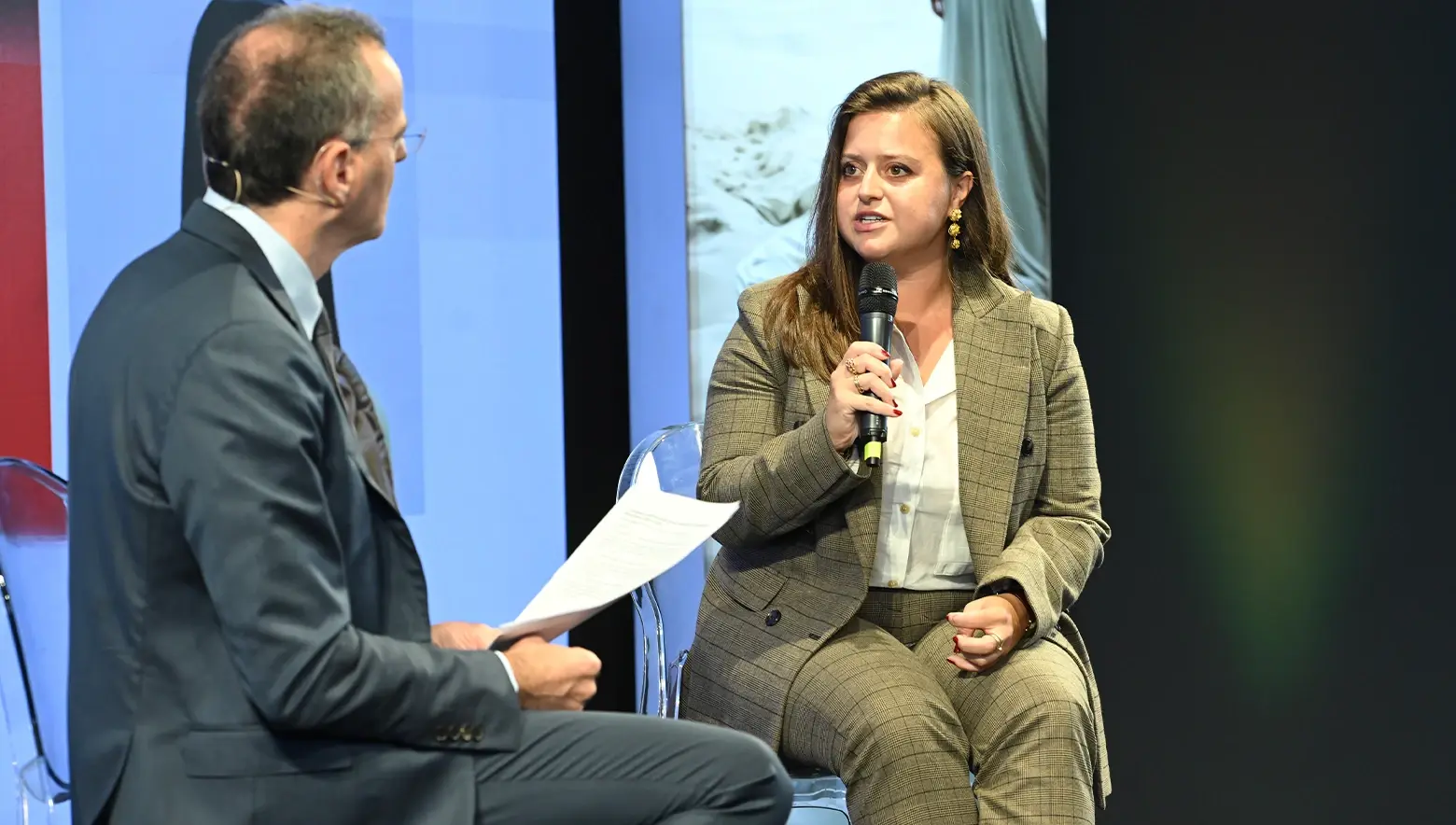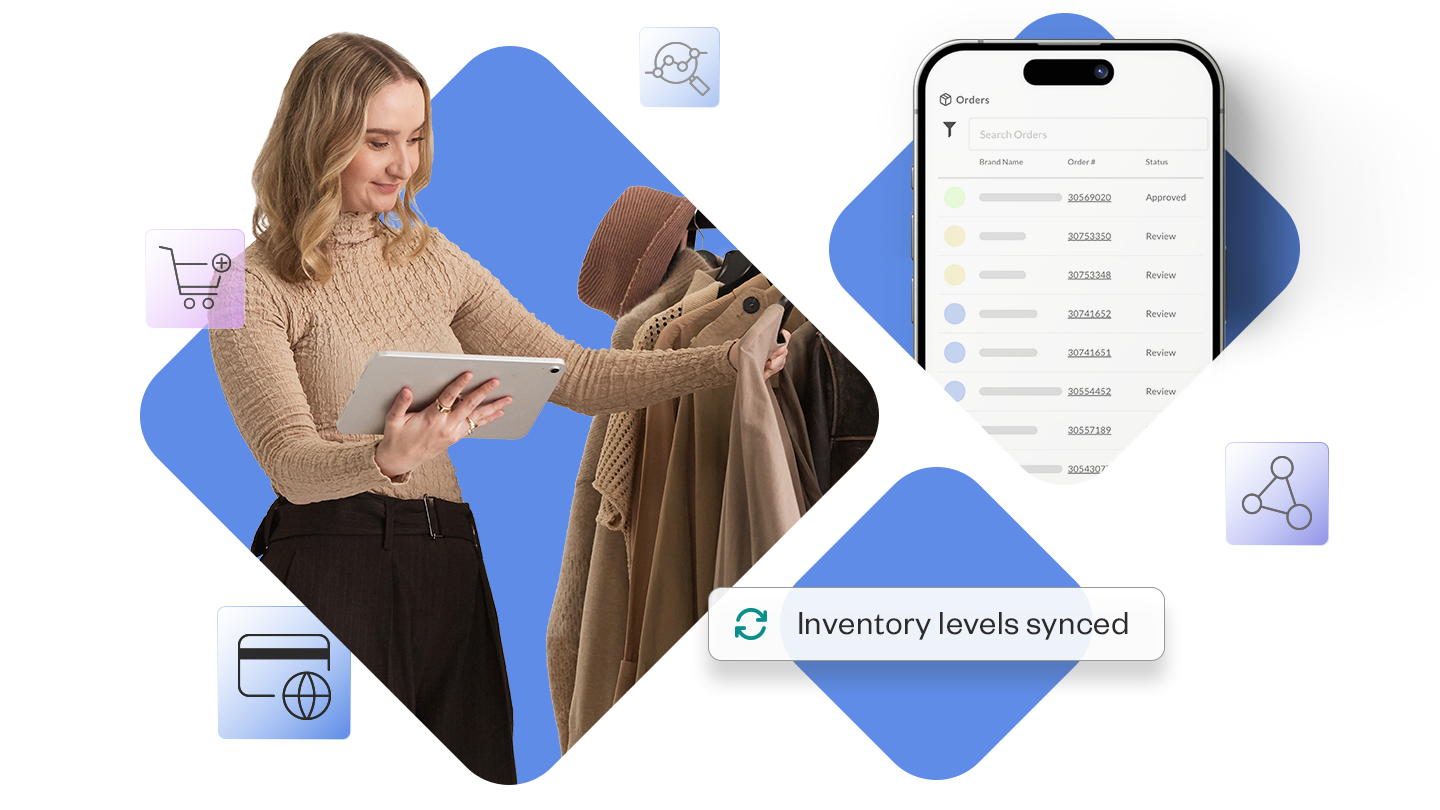Insights from NuORDER at the Milano Global Fashion Summit
Paola De Marco, NuORDER Senior Director of Client Success (Global), joined a panel at the Milano Global Fashion Summit to discuss how the wholesale landscape is evolving and how brands can stay ahead.

💡 A follow up to our recent coverage
At this year’s Milano Fashion Global Summit, which took place October 21-22, leaders from across the fashion and luxury retail space gathered to explore how emerging technologies, new economic pressures, and shifting cultural expectations are reshaping the industry. The summit focused on how brands can balance creativity, innovation, sustainability, and strategy in an increasingly competitive landscape.
Paola De Marco, Senior Director of Client Success (Global) from NuORDER by Lightspeed, joined a panel with Class Editori to discuss how the wholesale landscape is evolving and what brands need to prioritize to stay ahead.
From transactional to collaborative partnerships
One of the clearest shifts Paola noted is how the relationship between brands and retailers has matured over the past several years. Digitization, accelerated in 2020, did more than streamline workflows; it changed expectations on both sides.
“We’ve moved from transactional to collaborative."

—Paola De Marco, Senior Director of Client Success (Global), NuORDER by Lightspeed
Rather than brands pushing suggested buys and retailers responding in isolation, both now rely on shared data to make decisions. This allows teams to identify assortment gaps, support the strongest stores, and give more attention to smaller locations that might have previously been overlooked. The result is a more strategic, data-informed partnership that benefits both brand presentation and retail execution.
Clean data as the foundation for AI
AI was one of the summit’s biggest themes, but Paola emphasized an important point: its effectiveness depends entirely on having clean, reliable data feeding into it.
“To power AI, we need good data."

—Paola De Marco, Senior Director of Client Success (Global), NuORDER by Lightspeed
She explained that more retailers are looking for systems that reflect live sales and inventory information so they can forecast dynamically throughout the season—but this only works when the core tools behind the business actually connect. In practice, that means making sure the enterprise resource planning (ERP) system, the customer relationship management (CRM) system, and the B2B buying platform are integrated and syncing data both ways. When these systems speak to each other, teams gain a single, reliable view of what’s selling, where demand is building, and when replenishment is needed. But when they don’t, even small inconsistencies can create friction, slow down decision-making, and add complexity to already tight buying cycles.
This represents a meaningful departure from traditional, once-per-season planning. As Paola noted, fast fashion and omnichannel retail have changed the industry’s rhythm: “Things are changing on a daily basis.” Clean data gives brands and retailers the ability to adjust in real time, which reduces stockouts, limits excess inventory, and makes more confident buying decisions.
Buyers now also expect a digital-first experience with enriched imagery, real-time inventory visibility, and insights that help them localize assortments by region or store type. NuORDER’s tools meet this need by surfacing what’s trending and where categories are outperforming, helping retailers reorder confidently and curate more relevant assortments.
A defining moment for “Made-in-Italy” brands
For Italian brands, digital tools aren’t a threat but an amplifier. As Paola noted, today’s consumers want to connect with brands whose stories feel authentic. Technology helps Italian designers scale those stories globally while maintaining the precision and consistency they’re known for.
As the luxury sector continues to evolve, one message from the summit was clear: brands that embrace data, collaboration, and modern buying experiences will be the ones that stand out above the rest.
Get on the list
Wholesale tips and industry news you can’t miss, delivered weekly
